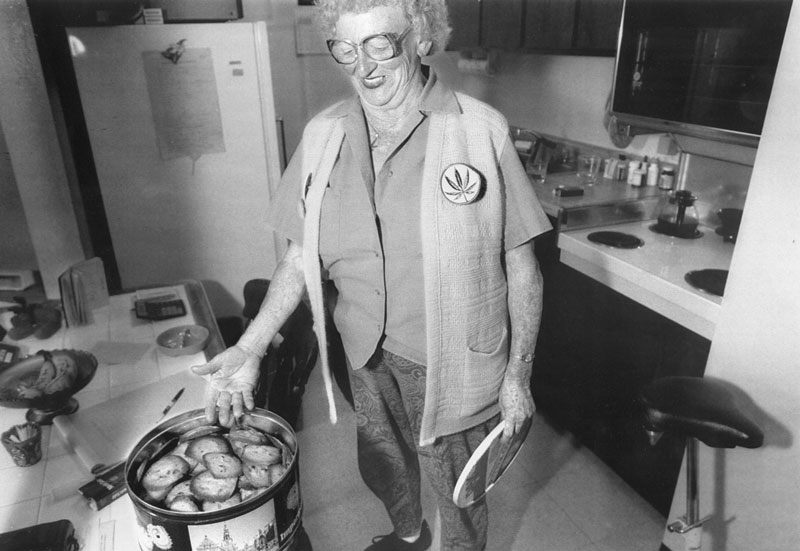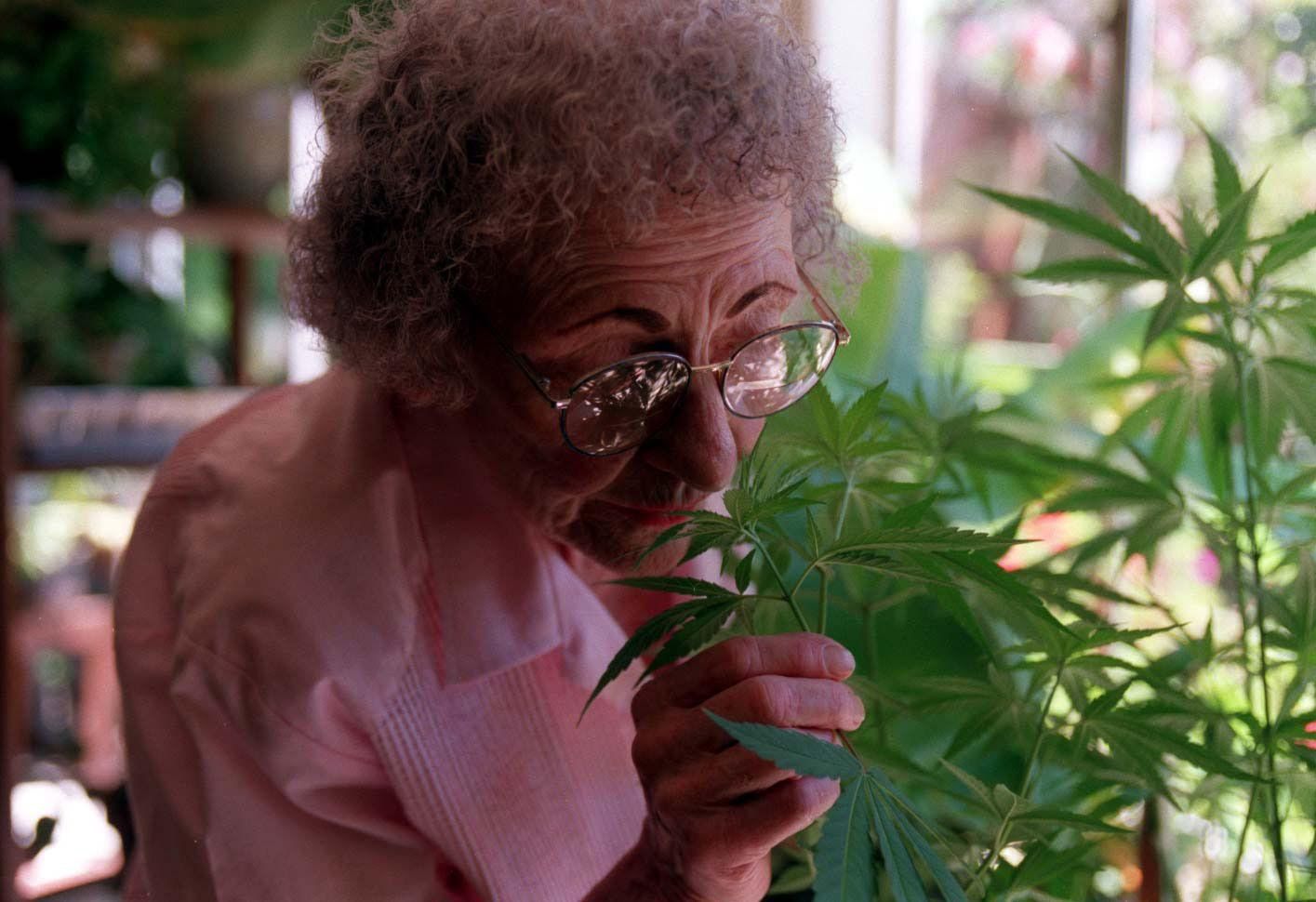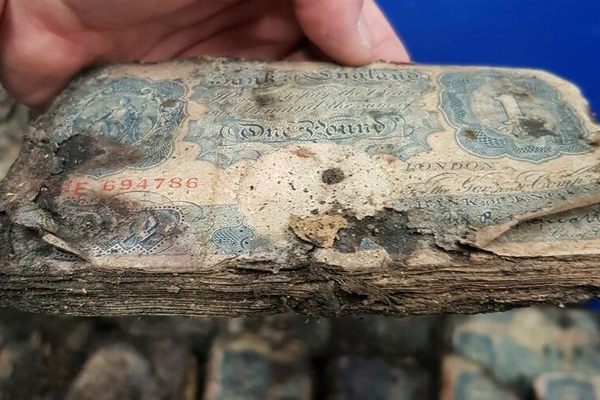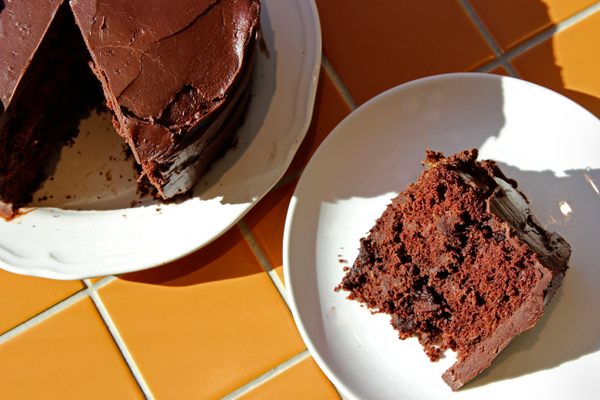Remembering ‘Brownie Mary,’ San Francisco’s Marijuana Pioneer
She baked thousands of pot brownies for AIDS patients.

Baked goods are often seen as comforting. The brownies made by Mary Jane Rathbun definitely fit that description. In 1996, the New York Times compared Rathbun to the domestic goddesses of American pop culture: Betty Crocker, Mrs. Field, Sara Lee. But Rathbun’s secret ingredient was cannabis. And instead of selling baking mix, Rathbun spent years campaigning for the legalization of medical marijuana, helping establish San Francisco at the forefront. It wasn’t long before she was known as “Brownie Mary,” a foul-mouthed friend to those affected by AIDS.
Rathbun was born in 1922, far from countercultural San Francisco, a city that would eventually hold a municipal holiday in her honor. Ironically, Mary Jane was her given name. As a child in Minnesota, she defied authority early, hitting a nun who tried to cane her and dropping out of school to become a waitress, her career for the next 50 years. While later in life she benefited from her unwitting, little-old-lady appearance, she was always an activist, campaigning for labor and abortion rights in her youth. Like many young Americans, she moved to the West Coast during World War II, settling in San Francisco.
She soon married, to a man she met at a USO dance. The marriage wasn’t successful, and the couple divorced. Rathbun had a daughter, named Peggy, but she was killed in a car accident in the early 1970s, when she was only 22. Later, friends would speculate the early death of her daughter inspired Rathbun’s extraordinary acts of charity.
In the early ’70s, she started selling brownies augmented with marijuana to make extra money. Though Rathbun was an early adopter of the edible, chocolate and marijuana have a long history together, going back to the notorious “hashish fudge” of writer Alice B. Toklas. But Rathbun took her brownie baking public, advertising for customers with printed flyers. Eventually she attracted law enforcement’s notice.

Her first arrest made national headlines. At 57, Rathbun already had a grandmotherly appearance, and reporters thrilled at the juxtaposition between her looks and her illegal activities (Rathbun liked to smoke marijuana as well as bake it). On January 17, 1981, The Guardian reported that Rathbun was wearing a flowered apron when she opened her apartment door to Detective Sergeant Robert Bullard, who was undercover as a customer. Accounts vary as to what Bullard saw in the apartment, but there were definitely dozens of brownies. Rathbun was famously unfiltered, and her response to being arrested was a resigned, “Oh, shit.” According to The Guardian, the police had come across one of Rathbun’s flyers advertising “magically delicious” brownies, and the squiggles and stars printed on the page were a sure-fire “drug-culture clue to their real nature.”
The police booked Rathbun on charges of possession and sale of illegal drugs. Her punishment was hundreds of hours of community service. While she’d been selling edibles to make money, her long community service stint made her a fixture on the volunteer scene.
In 1982, the Centers for Disease Control described a mysterious disease with the name Acquired Immune Deficiency Syndrome, or AIDS. The slow response to what was already an epidemic is generally blamed on politicians and officials ignoring it due to its prevalence among gay communities. San Francisco was especially hard hit. In 1987, a New York Times reporter interviewed residents of the Castro District, a historically gay neighborhood. Many had lost most of their friends, and city officials feared that the death toll would pass 10,000 by 1991.
The same year that the CDC first used the term AIDS, Rathbun was arrested for bringing brownies to a cancer patient. She’d become a regular volunteer at San Francisco General Hospital, and she noticed that her treats had a mysterious effect. For AIDS and cancer patients wracked by nausea, her brownies could ease discomfort and induce hunger, well-known attributes of marijuana. She began baking pot brownies by the score in 1984—at her peak, one fellow cannabis activist estimated she made more than 1600 a month. Volunteering to work with AIDS patients from the very beginning of the epidemic, Rathbun turned out industrial quantities of brownies with donated cannabis for “my gay friends” and her “kids,” as she called them. In a Chicago Tribune story, a fellow nurse called her a “shining beacon,” while patients swore that the brownies brought them back from the brink. In 1986, the hospital awarded her with a “Volunteer of the Year” award.

In the early ‘90s, Brownie Mary became a political powerhouse. Teaming up with marijuana activist Dennis Peron, she lobbied for the legalization of medical marijuana. She prominently contributed to the passing of San Francisco’s Proposition P in 1991, which freed physicians from the consequences of prescribing medical marijuana. Her third arrest in July 1992 received massive coverage, and headlines no longer portrayed her as a naughty grandmother. Now, she was an AIDS activist, one who not only baked weed brownies, but normal cookies as well: Someone who held the hands of patients when they received their diagnoses and encouraged them to keep living and hoping for a cure.
Rathbun ultimately was acquitted of the charges. The next month, the San Francisco Board of Supervisors declared August 25, 1992, to be “Brownie Mary Day.” Together with Peron, Rathbun assisted with opening America’s first medical marijuana dispensary and with passing Proposition 215 in 1996, which made California the first state to legalize medical marijuana. Her work also inspired research into the effectiveness of medical marijuana on those with HIV and AIDS.

Even though she wrote a cookbook with Peron in 1993, Brownie Mary’s recipe remains a secret to this day. In 1996, when she was 73, ailing, and, according to Peron, considering contacting Doctor Jack Kevorkian, who was famous for facilitating assisted suicide, she still refused to give it up. “When and if they legalize it, I’ll sell my brownie recipe to Betty Crocker or Duncan Hines,” she told a reporter, “and take the profits and buy an old Victorian for my kids with AIDS.”
She rallied, though, and together with Peron served as a grand marshal of the San Francisco Pride parade in 1997. When she died in 1999 of a heart attack, hundreds of people showed up to a vigil in her honor. The foul-mouthed “angel of mercy” was no more. Despite all of her legal troubles and arrests, she was hailed as a hero in many obituaries. But even at her lowest in 1996, she showed the same rebellious streak she’d shown as a child quarreling with nuns. She was glad to have bedeviled the authorities for so long, she told a reporter. “They wish they never heard the name ‘Brownie Mary.’”
Gastro Obscura covers the world’s most wondrous food and drink.
Sign up for our regular newsletter.






































Follow us on Twitter to get the latest on the world's hidden wonders.
Like us on Facebook to get the latest on the world's hidden wonders.
Follow us on Twitter Like us on Facebook